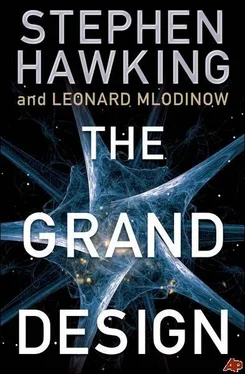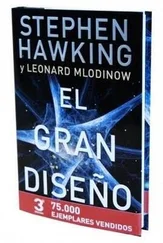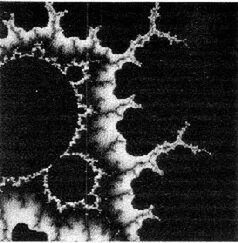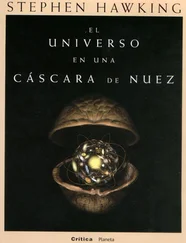The strong force can be renormalized on its own in a theory called QCD, or quantum chromodynamics. According to QCD, the proton, the neutron, and many other elementary particles of matter are made of quarks, which have a remarkable property that physicists have come to call color (hence the term “chromodynamics,” although quark colors are just helpful labels-there is no connection with visible color). Quarks come in three so-called colors, red, green, and blue. In addition, each quark has an anti-particle partner, and the colors of those particles are called anti-red, anti-green, and anti-blue. The idea is that only combinations with no net color can exist as free particles. There are two ways to achieve such neutral quark combinations. A color and its anti-color cancel, so a quark and an anti-quark form a colorless pair, an unstable particle called a meson. Also, when all the three colors (or anti-colors) are mixed, the result has no net color. Three quarks, one of each color, form stable particles called baryons, of which protons and neutrons are examples (and three anti-quarks form the anti-particles of the baryons). Protons and neutrons are the baryons that make up the nucleus of atoms and are the basis for all normal matter in the universe.
QCD also has a property called asymptotic freedom, which we referred to, without naming it, in Chapter 3. Asymptotic freedom means that the strong forces between quarks are small when the quarks are close together but increase if they are farther apart, rather as though they were joined by rubber bands. Asymptotic freedom explains why we don’t see isolated quarks in nature and have been unable to produce them in the laboratory. Still, even though we cannot observe individual quarks, we accept the model because it works so well at explaining the behavior of protons, neutrons, and other particles of matter.
After uniting the weak and electromagnetic forces, physicists in the 1970s looked for a way to bring the strong force into that theory. There are a number of so-called grand unified theories or GUTs that unify the strong forces with the weak force and electromagnetism, but they mostly predict that protons, the stuff that we are made of, should decay, on average, after about 10 32years. That is a very long lifetime, given that the universe is only about 10 10years old. But in quantum physics, when we say the average lifetime of a particle is 10 32years, we don’t mean that most particles live approximately 10 32years, some a bit more and some a bit less. Instead, what we mean is that, each year, the particle has a 1 in 10 32chance of decaying. As a result, if you watch a tank containing 10 32protons for just a few years, you ought to see some of the protons decay. It is not too hard to build such a tank, since 10 32protons are contained in just a thousand tons of water. Scientists have performed such experiments. It turns out that detecting the decays and differentiating them from other events caused by the cosmic rays that continually shower us from space is no easy matter. To minimize the noise, the experiments are carried out deep inside places such as the Kamioka Mining and Smelting Company’s mine 3,281 feet under a mountain in Japan, which is somewhat shielded from cosmic rays. As a result of observations in 2009, researchers have concluded that if protons decay at all, the proton lifetime is greater than about 10 34years, which is bad news for grand unified theories.

Since earlier observational evidence had also failed to support GUTs, most physicists adopted an ad hoc theory called the standard model, which comprises the unified theory of the electroweak forces and QCD as a theory of the strong forces. But in the standard model, the electroweak and strong forces act separately and are not truly unified. The standard model is very successful and agrees with all current observational evidence, but it is ultimately unsatisfactory because, apart from not unifying the electroweak and strong forces, it does not include gravity.
It may have proved difficult to meld the strong force with the electromagnetic and weak forces, but those problems are nothing compared with the problem of merging gravity with the other three, or even of creating a stand-alone quantum theory of gravity. The reason a quantum theory of gravity has proven so hard to create has to do with the Heisenberg uncertainty principle, which we discussed in Chapter 4. It is not obvious, but it turns out that with regard to that principle, the value of a field and its rate of change play the same role as the position and velocity of a particle. That is, the more accurately one is determined, the less accurately the other can be. An important consequence of that is that there is no such thing as empty space. That is because empty space means that both the value of a field and its rate of change are exactly zero. (If the field’s rate of change were not zero, the space would not remain empty.) Since the uncertainty principle does not allow the values of both the field and the rate of change to be exact, space is never empty. It can have a state of minimum energy, called the vacuum, but that state is subject to what are called quantum jitters, or vacuum fluctuations-particles and fields quivering in and out of existence.
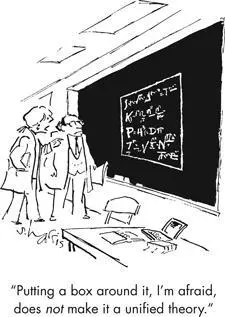
One can think of the vacuum fluctuations as pairs of particles that appear together at some time, move apart, then come together and annihilate each other. In terms of Feynman diagrams, they correspond to closed loops. These particles are called virtual particles. Unlike real particles, virtual particles cannot be observed directly with a particle detector. However, their indirect effects, such as small changes in the energy of electron orbits, can be measured, and agree with theoretical predictions to a remarkable degree of accuracy. The problem is that the virtual particles have energy, and because there are an infinite number of virtual pairs, they would have an infinite amount of energy. According to general relativity, this means that they would curve the universe to an infinitely small size, which obviously does not happen!
This plague of infinities is similar to the problem that occurs in the theories of the strong, weak, and electromagnetic forces, except in those cases renormalization removes the infinities. But the closed loops in the Feynman diagrams for gravity produce infinities that cannot be absorbed by renormalization because in general relativity there are not enough renormalizable parameters (such as the values of mass and charge) to remove all the quantum infinities from the theory. We are therefore left with a theory of gravity that predicts that certain quantities, such as the curvature of space-time, are infinite, which is no way to run a habitable universe. That means the only possibility of obtaining a sensible theory would be for all the infinities to somehow cancel, without resorting to renormalization.
In 1976 a possible solution to that problem was found. It is called supergravity. The prefix “super” was not appended because physicists thought it was “super” that this theory of quantum gravity might actually work. Instead, “super” refers to a kind of symmetry the theory possesses, called supersymmetry.
In physics a system is said to have a symmetry if its properties are unaffected by a certain transformation such as rotating it in space or taking its mirror image. For example, if you flip a donut over, it looks exactly the same (unless it has a chocolate topping, in which case it is better just to eat it). Supersymmetry is a more subtle kind of symmetry that cannot be associated with a transformation of ordinary space. One of the important implications of supersymmetry is that force particles and matter particles, and hence force and matter, are really just two facets of the same thing. Practically speaking, that means that each matter particle, such as a quark, ought to have a partner particle that is a force particle, and each force particle, such as the photon, ought to have a partner particle that is a matter particle. This has the potential to solve the problem of infinities because it turns out that the infinities from closed loops of force particles are positive while the infinities from closed loops of matter particles are negative, so the infinities in the theory arising from the force particles and their partner matter particles tend to cancel out. Unfortunately, the calculations required to find out whether there would be any infinities left uncanceled in supergravity were so long and difficult and had such potential for error that no one was prepared to undertake them. Most physicists believed, nonetheless, that supergravity was probably the right answer to the problem of unifying gravity with the other forces.
Читать дальше
